Sessions / YouTube
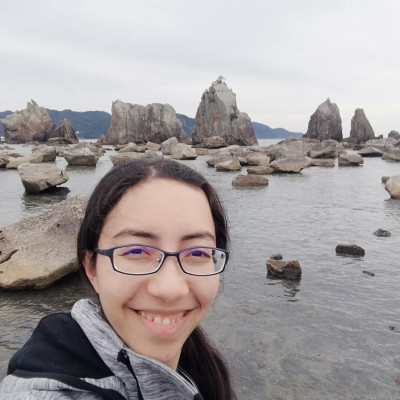
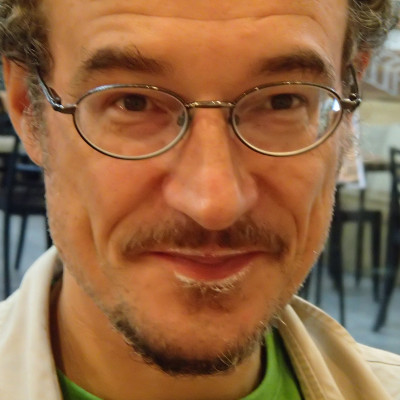
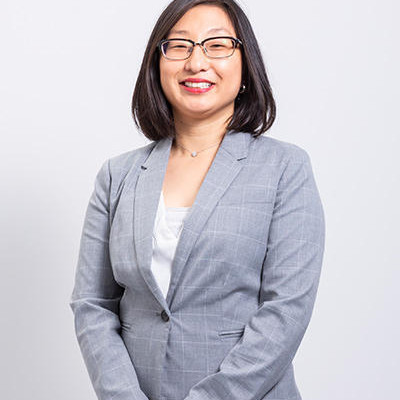


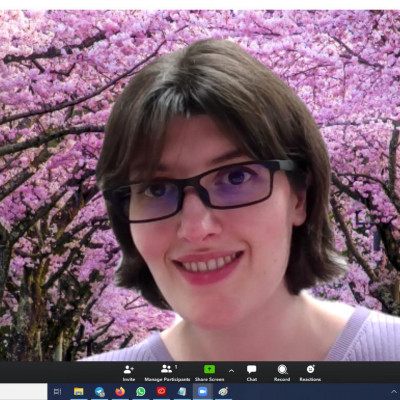
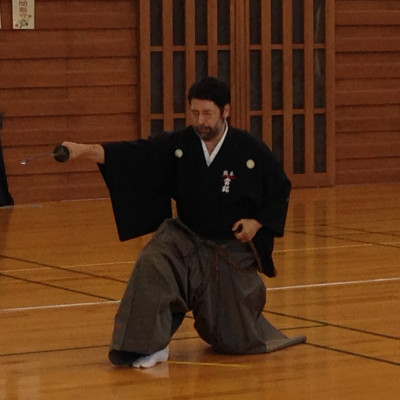
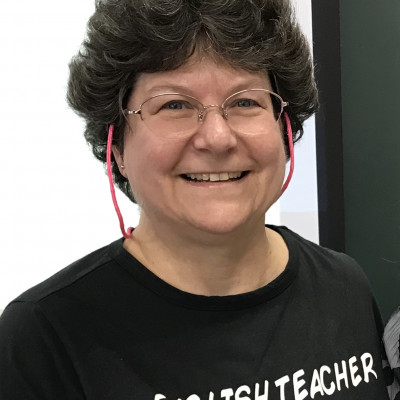



Student-goal setting through letter writing #136
This presentation will introduce letter writing as a way to improve students’ motivation in their language learning by having them set goals that they determine. Goal-setting is an approach to develop learner autonomy in the classroom. Learner autonomy is important because students need to have a sense of control in their language learning (Benson, 2011). The presenter will share the process of using letter writing in lessons. The study gathered data from approximately 80 surveys distributed at the middle and end of term during one semester from three different classes at a Liberal Arts university. The first was a mandatory English presentation class for first-year advanced intercultural communication students. The second was an elective cross-cultural communications class for second- to fourth-year students from various faculties. The third was an elective English discussion and meeting class also for second- to fourth-year students from various faculties. The strengths and limitations of the study based on current literature and student responses will be discussed. Finally, the presenter will offer suggestions for potential ways that participants can use this activity in English classes with learners who have varying levels of proficiencies in different educational settings.


Virtual reality in tourism education: A case study #151
With the increasing amount of research and development conducted in the use of virtual reality (VR) in both vocational training and language learning, these two areas seem to be both represented in the context of tourism education. This study was conducted with 22 students in the Department of Global Tourism at a university in western Japan. The study was designed not only to detect English learning affordances, but also to glean insight into practical benefits and issues of using VR for tourism studies in the department curriculum. The students were trained to create virtual tours of their hometowns with Tour Creator, a VR platform developed by Google. Students then guided classmates on virtual tours of their hometowns in English, using smartphones and mini VR glasses. Following the virtual tours, all the students responded to a user experience questionnaire with Likert-type and open-ended items on virtual presence, perceived usefulness and future use of VR, as well as the pros and cons of the activity among others. The findings of this study have important implications for the use of virtual reality in tourism education in EMI (English-Medium Instruction) contexts. The experience also suggests other potentials in using VR in tourism education.

Inventing persuasive arguments for writing and discussion #206
Whether students are ranking Marvel movies from best to worst or debating the potential value of increasing foreign workers, what they are doing in both cases is relying on general argument forms to persuade their audiences. Argumentation—the art of persuasion—is a skill with both social and academic validity for EFL students, but it has proven difficult to define, teach and learn (Hirvela, 2017). However, rhetoricians have taught that arguments take stock forms irrespective of their content (Keith & Lundberg, 2008), and these forms can be discovered by applying Aristotle’s common topics of conjecture, degree and possibility. The common topics are a generative heuristic that enable students to move beyond take-it-for-granted truisms and invent their own original, persuasive arguments on meaningful issues. In this presentation, participants will be shown how to apply the common topics to both general issues (e.g. Should discrimination be allowed?) and specific ones (e.g. Should Japanese medical universities be allowed to discriminate against applicants based on gender?) situated in Japan. Participants will then be able to generate persuasive arguments by applying the common topics to issues relevant to their own learners and contexts.

Developing L2 speaking skills with digital games #111
While digital games are not often integrated into foreign language curricula at schools and universities, a growing body of literature in digital game-based language learning suggests that commercially-produced games can be an effective and highly engaging means of facilitating second-language acquisition. Previous studies have mainly focussed on vocabulary acquisition and on the benefits of online interaction between learners and L1 speakers of the target language. However, the potential of digital games to develop learners’ L2 speaking skills still remains largely unexplored. To better understand the learning mechanisms involved, a study was designed in which four groups of young adult Japanese learners of English played the cooperative puzzle game Keep Talking and Nobody Explodes over four one-hour gameplay sessions. An initial discourse analysis of learner language elicited through the gameplay activity will be presented. This analysis is informed by a cognitive interactionist SLA framework that posits instances of learners negotiating for meaning as evidence for second language acquisition. Evidence pointing to gains in discourse management, vocabulary, pronunciation accuracy, and oral fluency resulting from game-based interaction between learners will also be discussed.
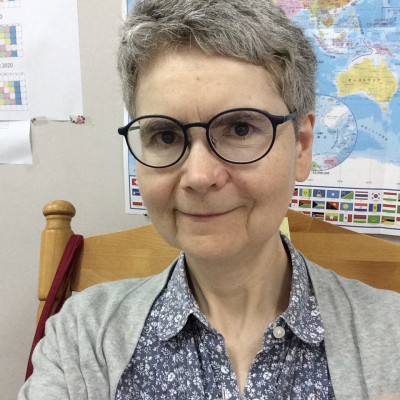
Joining “The World’s Largest Lesson” with an oral English class #128
This poster describes materials and activities related to the UN Goals for Sustainable development, in a university oral English class. The objectives of “The World’s Largest Lesson” are to stimulate teenagers to learn about global issues, specifically 17 goals outlined by the UN, and to implement actions to impact the global situation at local level. There is also a platform for teachers who want to connect their students with a global community of classes, using aps like skype, flipgrid and padlet. Participation takes place from September through to February, with the aim of students sharing presentations on their chosen themes and taking action locally. The presenter will explain the benefits and drawbacks of the project and investigate ways to deal with possible problems. The project was attempted in 2018-19 with mixed results, due to difficulties synchronizing schedules and integrating the SDGs content with other course content. Cultural differences also caused a difficulty. In 2019-20, measures such as pre-teaching about culture difference and habituating students to the use of flipgrid earlier in the semester, helped to make the exchange happen more smoothly, giving students a chance to practice presenting themselves on-line and connecting with near-peers in Europe.


A case for scaffolding self-reflection #137
It is through self-reflection that individuals are able to understand themselves, their context, and make sense of the connections. For students, self-reflection is a valuable tool in becoming more effective language learners, since those who are able to self-reflect have been shown to have a greater capacity for self-organising their behaviours than those who lack the ability (Deci & Ryan, 2000, Ryan & Deci, 2017 ). This presentation will argue for the need for more scaffolded self-reflective teaching practices based on the literature, and provide three mini-case studies on how self-reflection can be implemented in university settings. The first of these mini-case studies outlines materials developed for a reflective workshop conducted with 200+ sophomore students. The second will explore how written reflections when revisited with a critical eye, result in deeper, more critical reflective reports. The final case-study will provide insight into how group discussions can help build supportive classrooms and raise self-awareness. Each of these mini-case studies will demonstrate how student self-reflections elicited clearer goals and encouraged focused learning behaviours. The presentation will conclude with a call for audience participation to share the role of student self-reflection in their own classrooms.



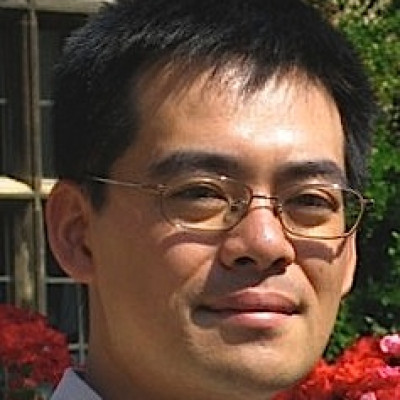

Adapting Immersive Technology for Learning Post-COVID-19 #150
A discussion around the latest research and development around immersive technologies in education. We will host a series of short presenters that will introduce innovative research and projects in immersive learning. The short presentations will be followed by a panel discussion and open Q&A around implementing immersive learning during and after the health crisis. The event will be in AltspaceVR, which is a free Social VR platform owned by Microsoft that can be loaded onto PC, Mac, and also iOS and Android devices. We will also be livestreaming from VR to YouTube for later viewing. Can visit http://mavr.site for detailed information.
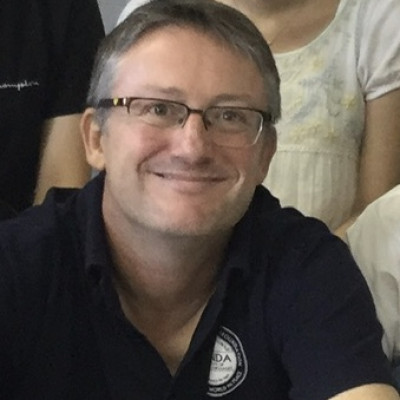
A Vocabulary Learning Strategies Course #138
In this poster presentation, a vocabulary learning strategies course which develops student autonomy is described. The course is structured using an iterative approach to engage students in creating, evaluating, and revising individual learning plans based upon personal needs analysis. These plans are appraised and reformulated as students gradually discover more about vocabulary learning strategies. The course culminates in two projects; one in which learners in pairs create authentic texts to demonstrate their ability to use vocabulary in context, and the other, in which they teach vocabulary learning strategies to a class of their peers. The presentation will not only explain the design and contents of the course, but also subsequent changes to the course going into its second year.

Social annotation in the writing classroom #113
Annotation, whether in the margins of a book or online text through the use of an online tool, is a social process mitigated by social structures. Learning happens within a specific context, and with the right tools, the text itself can be that context. This presentation will introduce social annotation as a learning tool for the writing classroom by describing a project implemented across two university writing courses. The project asked students to annotate online texts prior to using the texts as sources for summary/response essays. This session will be practice-oriented, but the presenter will mention this research project as an example of how social annotation might be used in the writing classroom. The presenter will discuss how social annotation on online texts has the potential to facilitate collaborative learning, community building, and enhanced reading comprehension. Attendees of this session will leave with a better understanding of what social annotation is, and they also have the chance to explore a social annotation tool and consider the affordances it may bring to their own teaching and learning contexts.

Perceptions of peer assessments of oral presentations #175
As more and more EFL programs incorporate oral presentations into their curriculum, the time-consuming nature of presentations where one student presents while the rest of the class listens has necessitated experimentation with alternative formats in presentation procedures and assessment. Peer assessment is one way to help offset this downtime. As well as providing more formative feedback to the students, it is beneficial in focusing attention on those skills needed for making a presentation successful. This presentation will present the findings of a study examining the perceptions of Japanese university EFL students towards peer assessment of oral presentations. Quantitative data was obtained through the use of a survey adapted from Fazel (2015) administered two times to the same set of students; after one semester of instruction (n=19) and at the conclusion of the second semester (n=17). Additional qualitative data will be analyzed in the form of written comments provided by the students. Not surprisingly, the results indicate that the increased exposure allowed the students to developed stronger opinions as to the benefits of peer assessment in the oral presentation classroom. The findings will be discussed as well as considerations offered for future research.

Barriers to ICT integration at a Japanese college #114
The purpose of this qualitative action research study was to explore the perceptions and experiences of EFL university teachers in Eastern Japan in overcoming barriers to the integration of information and communication technology (ICT) in their daily teaching practice. The problem addressed in this study was that universities in Japan are under pressure to align their curriculum with government initiatives that demand ICT integration, but governmental guidelines for faculty development across educational institutions have not been developed. The research setting was a liberal arts college in Eastern Japan. Purposeful sampling was used to attain a sample of 12 EFL university teachers. Cultural-historical activity theory (CHAT) served as the theoretical framework. MAXQDA 12 software was used to identify codes, patterns, and themes across the collected data. The major themes included were (a) software was too difficult to use for teaching purposes and was a barrier to ICT integration and (b) faculty contemplation of learning objectives and learning outcomes informed decisions to integrate ICT successfully. Recommendations for educational leadership included creating a theoretically driven ICT training program tied to curriculum learning objectives and hiring educational technologists to provide “just-in-time” techno-pedagogical support.

Pre-departure orientation for study in the U.K. #159
Despite the importance of pre-departure orientations that focus on the culture and language of the host country where students study abroad, it appears that pre-departure orientations provided by many Japanese universities are limited to the basics, such as travel logistics and health and safety issues. Consequently, students could end up regarding studying abroad as merely traveling, rather than as educational opportunities. The purpose of this presentation, therefore, is to explore how pre-departure orientations that focus on the target culture and language would benefit students planning to study abroad. As an English teacher at a university in Japan, I developed a pre-departure orientation intended for university students planning to attend a two-week general English language course in the U.K. to help them understand British culture and improve English before studying abroad; and I conducted a qualitative case study to investigate participants’ perceptions of the newly developed pre-departure orientation to understand whether the orientation benefited students from studying abroad perspectives. I believe that the presentation will help you understand the benefits of pre-departure orientations that focus on the culture and language of the host country.

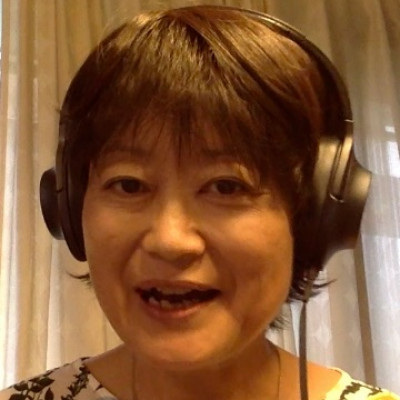
Transferable skills via progressive PBL #162
Are you adequately preparing your students for success outside of the language classroom? We asked ourselves this same question. In a one-year elective class aimed at developing professional skills, the educators aspired to facilitate university students’ abilities to excel in all classes and to become better prospective employees. By the end of each semester, students were tasked with creating projects that would require knowledge, research tools, and a number of technical skills. The hurdle was high and intimidating. However, by employing a progressive approach to project based learning (PBL), students learned skills in earlier projects that could transfer not only to the final projects, but also to other courses and employment options. Students themselves remarked on the progress that they were making and their abilities to apply what they had learned earlier to what was to come later. This presentation will share ideas behind the conceptualization of the class, data from what students learned in terms of skills and language, share student reactions and advice for improving the course, and help attendees to conceive of their own progressive PBL courses.
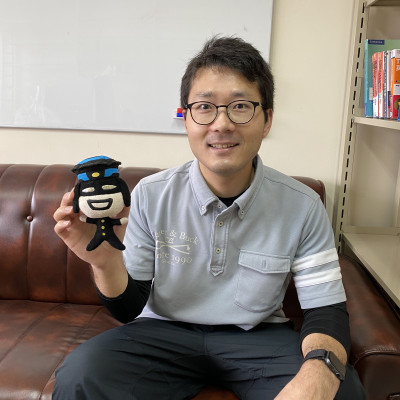


Redefining accessibility in language learning #170
Teachers are having to consider an increasing range of learner needs as learning environments become more diverse. Learners with special needs are one example. According to JASSO (2019), the percentage of students with disabilities in post-secondary education has increased from 0.44% to 1.05% since 2014. However, only 28% of university language classes offer support for students with disabilities (Tonooka, 2015). The Act for Eliminating Discrimination against Persons with Disabilities requires teachers to provide reasonable accommodation for learners with special needs. This change reflects shifting of the notion of disability from impairment to inaccessibility to learning resources. It is essential that language teachers consider how they can redefine the notion of accessibility in language learning in order to improve overall learning experiences. This poster session highlights various learner needs that are prevalent in language classes. These include communicative, physiological, psychological, social, and cognitive differences. Presenters will share their insights into developing accessible learning. There is no “one-size-fits-all” pedagogy for language learning. The goal of this session is to facilitate discussions on raising awareness, improving accessibility, and considering how teachers can best support learners with special needs. Participants are welcome to share their classroom stories concerning accessibility in language learning.

Cognitive influence of food and taste terminology #145
In this study, the researcher investigated the cognitive and cross-linguistic influence of food and taste terminology in Japanese adult learners of English and how it affects language learning. The researcher investigated if Japanese adult learners of English think differently to native English speakers about the taste of food and if different features of language such as ideophones and metaphor affect cognition. The researcher used the domain of food to conduct two cross-sectional experiments on sixteen Japanese English learners and sixteen native English-speaking participants with similar variables using quantitative and qualitative methods. This study builds on research from previous studies and works by O'Mahony and Isshi (1986), Backhouse (1994), Deignan (1997), Cook (2010), and Littlemore (2015). The experiments carried out in this study established a number of findings that suggest that the language features of food and taste terminology affect cognition and identified several differences in the way the two groups think about food including variances in schematic mental associations. The results also highlighted the need for teaching materials to be developed to enable teachers to focus of figurative speech, metaphor interpretation and other cross-linguistic influences. These teaching materials could be incorporated into upper intermediate and advanced level curriculums for adult learners to improve the developing language competence.
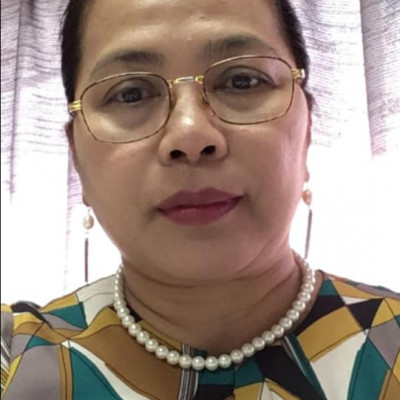
Self-disclosure: A window on the mind of teachers #146
While the efficiency of subjective reporting and qualitative data, both solicited and unsolicited has come in and out of fashion since its inception (Hyers, 2018), such techniques promote a sensitive understanding of the particularities and conditions of individual lives. In this paper, three intimate teacher’s case studies will be reported. Self-compassion, self-care techniques, and even self-compassion fatigue were drawn from narrative group work, eight-week meditation, self-led mindfulness, and solicited diaries to enhance teachers' overall psychological and emotional wellbeing. Through the case studies of non-Japanese English teachers based in Tokyo, the presence of ongoing workplace stressors and lifestyle adjustments that impact teachers’ professional performance and private life satisfaction are identified. Based on the result of the narrative self-disclosure, one of the participants revealed that despite the pressure on her jobs such as a limited source of teaching materials, language barrier, and teaching in different schools, at least four schools, in a day made her psychologically, and physically exhausted. Being connected with her colleagues, frequent communication with her family, and self-meditation helped her to embrace her current situation positively. In addition, the benefits and associated challenges of using self-compassion techniques and mindfulness with education professionals are proven to be effective.

Pragmatics & Business Communication SIG Forum #157
Pragmatics issues in ELF/BELF: Views from a Business English perspective. Business English training in Japan has traditionally been pragmatics-oriented compared with ELT (English Language Teaching) at university and especially in secondary education which has often remained language-focused and accuracy-obsessed. This reflects a BE (Business English) training priority on communicative effectiveness demanded by human resource departments and employees with real work needs. However, like language in other ELT contexts, the pragmatics of BE training has been dominated by native speaker norms. The recent interest in ELF/BELF challenges this dominance. What might it mean for BE pragmatics if BE loses the native speaker orientation? Whose pragmatics should be taught instead? The speakers in this forum will draw on their history of teaching BE in both company training and in university classes and will discuss the issues and possibilities. The audience will be encouraged to join in the discussion.

Positive conversations in the EFL classroom #147
Positive psychology in education has gained attention recently for its potential to enrich the foreign language classroom. With a focus on improving well-being, positive psychology is a natural fit for language learning. One way to think about positive classroom activities is with the PERMA model. Each of the five letters of “PERMA” stand for a different component that can be used to think about well-being and happiness. Teachers of foreign languages, though they may not be conscious of it, probably already include positive activities in their lessons. For example, Positive emotions are present when we attempt to make classroom experiences enjoyable, and we often encourage our students to reflect on their Achievements. These two elements can be included in guided conversation activities and can serve as an effective way to bring positive psychology into classroom activities. By suggesting topics and providing vocabulary and phrases rooted in positive psychology, we can make these activities meaningful for students. However, it is important to consider if students will “pick up” on our intention of making activities positive. Students (n=109) were surveyed to investigate their preference for using conversation starters rooted in positive psychology. This poster will share the results and also how guided conversation activities (including starting questions, vocabulary, and strategies) can be framed in such a way as to incorporate aspects of positive psychology.

How regulatory fit can increase learner motivation #148
From a psychological perspective, basic motivation to act is dependent upon how hard someone thinks a task is weighed against how much they value the outcome they expect. Importantly, it is the perception of this difficulty and outcome that matters most to motivation. Often, what we do is not as important as how we do it, and this colors these perceptions of ours. Regulatory focus theory comes from the field of psychology and is concerned with how we do something. It identifies two ways people can be motivated to work on a task: With a promotion focus, oriented toward growth and development of new ideas, and a prevention focus, which is more concerned with avoiding errors and measuring one’s performance against what is already known. Many task strategies favor promotion (finding new possible answers—creative tasks, brainstorming, discussing new topics) while others favor prevention (avoiding wrong answers—honing knowledge and skills that have already been learned, such as grammar and vocabulary). While learners may individually have a default preference, research also shows that they can be primed to thinking through either promotion or prevention lenses based on teacher language or a learner’s recall of a past successful experience when they used a promotion or prevention strategy respectively. This poster presentation will explain the basics of regulatory focus theory and illustrate how it can be applied to harmonize learners, common L2 learning tasks, and strategies in a synergistic manner—regulatory fit—for positive motivational results.

Snakes and Ladders: Drivers of Student Differences in Reading Amounts #123
The benefits of extensive reading are widely recognized in research (Day, 2010), but it can be challenging to get students to read enough to reap such benefits. While some students read much more than required by their assignments, others read the minimum amount or less. Student motivation to read has been investigated quantitatively using questionnaires (Mori, 2002; Takase, 2007), but less research has taken a quantitative approach. Milliner and Cote (2015) used focus group discussions to explore disengaged students’ perceptions of reading done on digital platforms.
This study explored factors that influence the amount of reading done as homework by students at a Japanese university using an English virtual library of graded readers. Semi structured interviews were conducted with 14 prolific readers and 16 reluctant readers in Japanese to identify factors that influenced the amounts they read. Students were selected from 352 freshman students across 10 classes varying in faculty and proficiency levels. Students whose reading word counts were within the top or bottom 5% of their respective classes were approached to participate in interviews conducted outside of regular class time. Audio recordings of the interviews were analyzed to identify common themes.
Based upon these themes, several recommendations are made to help reduce obstacles for reluctant readers as well as take advantage of the mindsets and strategies of prolific readers.

Survey validation through vocabulary analysis #177
The researcher explored how vocabulary knowledge may affect responses from L2 English users who were requested to complete Vandergrift’s (2005) Metacognitive Awareness Listening Questionnaire (MALQ). Six participants (low-intermediate to advanced L2 English learners) from varied educational and professional backgrounds were recruited for this study. Participants were instructed to complete the MALQ and use textual enhancements (e.g., highlighting, underlining) to indicate the degree of familiarity with new or infrequently viewed words and phrases. Participants were also instructed to write notes regarding any unknown vocabulary expressions. After collecting the participants’ data, the researcher engaged in confirmation checks with each individual. The researcher entered the statements presented on the MALQ into the Compleat Lexical Tutor to determine the word families of the vocabulary used. The participants indicated that vocabulary items greater than the 3000-word family range and multiword expressions influenced responses, regardless of their language levels. Advanced L2 English users noted that a few construct items could be misinterpreted and become unintended distractors for lower level L2 users, while low-intermediate L2 English speakers emphasized the necessity of learning secondary and tertiary word meanings. All participants stated the need to learn multi-word units rather than vocabulary in isolation. During this presentation, I will discuss how participants were recruited and describe their backgrounds; how confirmation checks were conducted and analyzed; the limitations of this study; and how the methodology could be applied and modified for different contexts. Suggestions and comments from the attending audience will be warmly welcomed.

The why and how of teacher created podcasts #116
Podcasts have become ubiquitous in all aspects of modern life, including the English language classroom. It seems as though there is a podcast for just about every person’s areas of interest. There are, of course, a plethora of podcasts made specifically for English learners. But what if there are no podcasts that serve the needs of your students? Maybe their interests and abilities do not align with anything available to them. In this presentation, I will discuss the reasons for making a podcast specifically tailored to your students' needs and interests. I will also discuss some of the practical aspects that go into making a podcast, including basic equipment needed and internet resources needed. I will also share how I have used the podcasts I have recorded with my students for extensive listening practice. As many Japanese students may be unfamiliar with podcasts in general, I plan to share ways I have helped my students learn how to access and best utilize the podcast format on both their phones and computers. Podcasts need not be limited to students at an intermediate level and above. I will show you how to get past the initial hurdles of getting started. Getting started might seem like a daunting task, but with just a little help, anyone can be a podcaster.

A global approach to discussion class materials #130
While there have been attempts from Japanese universities to be more international and produce global jinzai (global human resources), guidelines for implementation have remained ambiguous. Therefore, this presentation explains how a global approach was used to design materials for an English discussion class. The approach combines elements from global Englishes, based on suggestions by Galloway (2017) that learners should be aware of world Englishes and English as a lingua franca, as well as elements from intercultural communication, based on suggestions by Yoshida, Yashiro and Suzuki (2013) that learners should develop an understanding of themselves, their own culture and cultural differences. Materials for two lessons are shown. One of them is about English in Singapore, as understanding the role of Singlish is beneficial to understand the connection between varieties of English and cultural identity (Jenkins, 2015). The other is about individualism versus collectivism, which is seen as essential in understanding the difference between western and Asian cultures (Servaes, 2016). The effectiveness of these lessons is discussed, and suggestions are made about how this approach could be used to generate more lessons which will help university students to be ready to successfully communicate with people from all over the world.

Virtual Presentations at ELT Conferences #164
There are many reasons that travel to conferences by presenters may be unwanted or impossible. Such reasons include, but are not limited to, physical disability, lack of financing, political restrictions, and eco-sustainability concerns. Nonetheless, presenting at conferences is often key to academic and professional networking, disseminating one's research and ideas, and career progression. Thus, there arises for some a tension between the inability or lack of desire to travel to present and the perception of the need to present at conferences. Virtual presentations, in which the presenting party is physically remote from the audience, could dissolve, or at least ameliorate, this tension. The study presented here investigates the presentation format policies of more than 200 conferences in the field of English Language Teaching and adjacent fields. The percentage of conferences that permit virtual conferences is reported, and for those conferences that do permit virtual presentations, it is reported whether the format is synchronous, asynchronous, or mixed. This data then informs a discussion about the ethics of travel for conferences in terms of inclusivity/accessibility and sustainability. Some potential benefits of virtual presentations for conferences that do not currently permit them are also discussed.
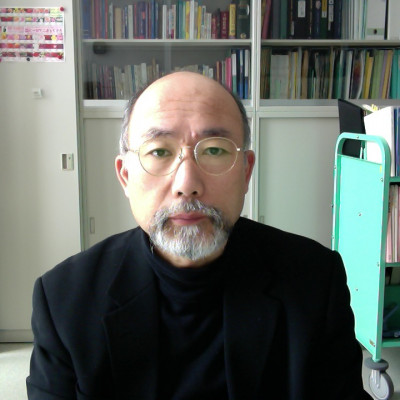
L2 readers’ attitude & its effect on word count #125
Even though it is logical that students who have a good reading attitude should read more books, that truism still needs to be investigated in detail. The presenter verified whether Nuttall(2005)’s virtuous circle is true by asking two research questions : (1) Does a student's reading attitude influence the amount of reading they can accomplish? (2) How does the amount of reading affect their reading attitude? Questionnaires based on Lee and Schallert (2014) were given to fifty-five university freshmen before and after a fifteen-week extensive reading program. One of the constituents of reading attitude, i.e. conative (behavioral intentions) factor, was analyzed by investigating the correlation between the subjects’ answers and their total reading word count. Statistically significant relationships between the variables were found. The English proficiency level of the subjects was ranging from false beginner to lower intermediate. The number of words they read during the semester was recorded by MReader. The average word count was 105,147. The scores of TOEIC Bridge test was also scrutinized. The findings indicated that the subjects’ word count steadily increased even when they did not start with a positive reading attitude. On the other hand, it was determined that increasing the amount of reading promoted a more positive reading attitude. The findings imply that the total amount of reading increases even if readers do not have a positive reading attitude at the outset, but the increased amount of reading will then have a marked influence on the subjects’ reading attitude.


Curriculum integration through interdisciplinary collaboration #166
Interdisciplinary collaboration combines approaches and methods from different disciplines with the intention of improving students’ learning experiences and outcomes (DelliCarpini, 2009). It has been described as having the potential to be a valuable and effective method of professional development (Dove & Honigsfeld, 2010). In this presentation, we describe an ongoing action research project following the cyclical process outlined by Altrichter, Posch and Somekh (1993). We used interdisciplinary collaboration in the form of joint writing and presentation tasks in World History and English Expression (writing) classes in an attempt to increase integration between English and Science, Technology, Engineering, and Mathematics (STEM) courses at a technical college in Japan. We explain the rationale behind this action research project, its initial implementation and expansion to include other tasks and STEM subjects, and our impressions of the successes, failures, and limitations of the project over the 2 years. We conclude with our plans for future iterations of the project and suggestions for fellow teachers to incorporate interdisciplinary collaboration into their courses.

Investigating the experience of non-Japanese long-term EFL teaching professionals at Japanese Universities #107
As the population of Japan gets older and the number of students falls, hiring new teaching staff at Japanese universities has become less frequent than in the past. As a result, the average age of long-term teaching professionals has risen, and it is worthwhile to consider how these teachers are coping in the profession after many years of teaching. This presentation will briefly share some research on teacher burnout, and then focus on the findings from a series of interviews which were held with non-Japanese teachers of English at Japanese universities. Common problems and issues such as burnout, administrative changes, and other issues will be discussed. Some tips on long-term survival in a Japanese tertiary institution are offered and audience comments are welcomed.

I am a Genius! #174
How can teachers engage their students in meaningful learning, spark intrinsic motivation and allow their students to direct their own learning? Once used at Google, 'Genius Hour' was used as a way to engage employees and boost productivity. It has now grown into an educational tool and is used by educators and learners around the world. Based on inquiry-led learning, 'Genius Hour' also known as '20% time', gives students autonomy over their own learning whilst also creating a reason to learn. Students choose a topic they are passionate about, decide how to explore it and what questions they want to answer themselves. It is completely student-driven, personalised, not teacher-led, involves no textbook and inclusive because every learner can participate. Time is dedicated to 'Genius Hour' in which learners have a chance to further their chosen area of research. It is also a valuable chance for teachers to learn about their students' passions. If you are interested in finding out more, come to this Interactive Poster Session and find out how this can be applied to your classroom. It will be of interest to all teachers, particularly Young Learner teachers.

Teaching film and literature in the EFL classroom. #143
It is well known in the EFL world that film and fiction can be incredibly engaging for students. Through the media of film and literature, it is my belief that students are able to not only practice their listening and reading skills, but also develop their speaking and writing skills as well through class discussion and written assignments. Therefore, with a graduate and post-graduate background in Literature, I hoped to replicate an accessible seminar-style course, similar to my own educational experience, with a class of Upper-Intermediate students at a Japanese university.
This presentation outlines the pedagogical methods, topics and format adopted, as well as highlighting some of the chosen texts and rationales for their use, which attempted to successfully bring a native-level film and literature university course into an EFL conversation classroom. It will also present and assess the strategies used to make authentic, ungraded film and short fiction accessible, engaging and a source of fruitful discussion for students.
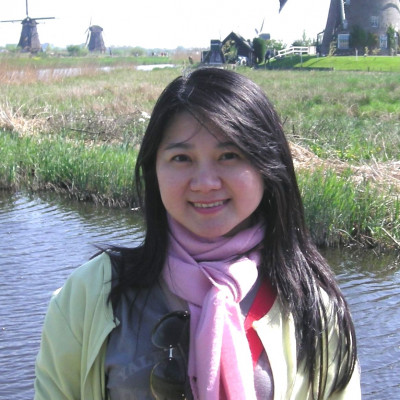
Learning western literature through computational thinking #142
The study aims to discuss the extent to which project-based learning (PjBL) involved in digital technology can create an environment for Computational Thinking (CT), which in turn might enhance the learning of Western literature in the Expanding Circle where English is used as a foreign language. While PjBL and CT have gained much attention from educators in Taiwan, teachers of literature are confronting a serious challenge resulting from students’ doubts about the function and practicality of learning literature. It is in such a context that I blend CT into a required course for English majors 2019-2020, “Introduction to Western Literature.” One purpose of this study is to observe how students’ familiarity with computer and the Internet enables them to concretize and present their understanding of literature. The other purpose is to utilize the elements of CT in class activities so that students could learn to simplify literary works by systemizing information and organizing ideas in the process of completing such projects as story creation, mind map, and micro movie. The result of this study is based on the execution of students’ projects, along with the instructor’s observations, and the analysis of a post-activity questionnaire.

Templates for term paper research notes #101
Academic Writing is a required two-semester course for first year students at Kyoto University. In the second semester all students write a long essay (normally a literature review) of at least 1,000 words. Textbooks typically focus on the language used (paragraph and essay structure, common genres, academic style, etc.), but aside from stressing the importance of paraphrasing and summarizing to avoid plagiarism, no guidance is given on how to take notes while conducting research. Students must efficiently read through multiple sources, and synthesize points into a coherent argument. This requires research and cognitive skills not covered in the textbooks. Dedicated software exists to help researchers organize their work, but teachers are not likely to require students to use such apps. The presenter will show simple templates in MS Word and Excel, and discuss how he uses them in his classes.


A peer support program for incoming students #196
"The integration of new students into college programs can be a challenge for both the staff and the new students themselves. The start of college can be an anxiety filled time and the provision of support is not only appreciated by the new students, but also helps them gain a sense of belonging, form social networks, and increase confidence. The institution itself benefits from greater student satisfaction and improved student retention. This presentation will look at the evolution of a peer support program at a small university’s English department during its orientation period. The Peer Support Team (PST) involved twenty 2nd year students assisting forty-one incoming students in their transition from high school to university. First, an overview of the current program and how it was developed over several years will be presented. This will be followed by an examination of the results of post-participation questionnaires on both student cohorts. The mixed method research provided positive feedback on the program and its implementation, as well as identifying points for improvement. Time will be allotted to an exchange of ideas and strategies used to integrate incoming students into the university system, as well as to increase student involvement within the given department and the institution. Participants should leave the session with a renewed sense of the importance of how they integrate incoming students into the university environment."